The taxpayer-funded ABC has become one of Australia’s leading propagandists for Big Australia immigration and a high-density future.
Check out the garbage below from the ABC imploring Australians to accept high-rise shoebox living as their future, as the federal government crush-loads our major cities with endless mass migration.
“All over Australia we are being told that the solution to our housing woes is simple: we need to build up, up, up, up”, YIMBY Sharath Mahendran claims.
“Poor build quality is a big issue”, the Mahendran admits. “But governments are working on this”, he says. “We don’t need to fear a denser future”.
“To stop the housing crisis from tearing us all apart, let’s all get a little bit closer”, Mahendran says.
If Mahendran had bothered to check, he would have recognised that blanketing Australia’s cities with high-rise shoeboxes is unlikely to make housing more affordable.
The reason is obvious: it is too expensive to construct apartments. As a result, they cannot be delivered at a reasonable cost to buyers.
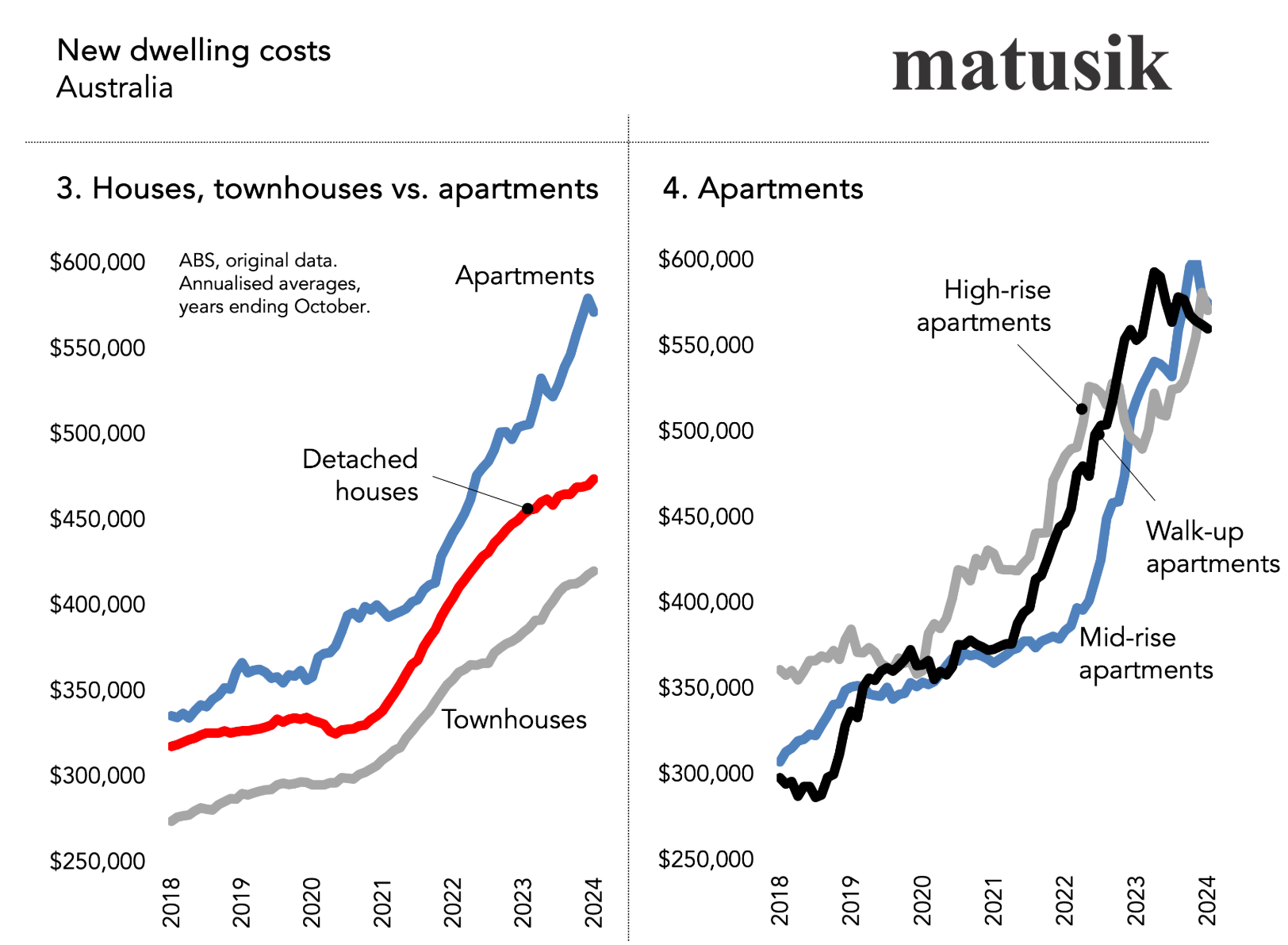
Urbis highlighted the excessive cost of apartment development, reporting that selling prices in Australia’s largest cities rose by a record 24% in the December quarter, reaching more than $19,000 per square metre.
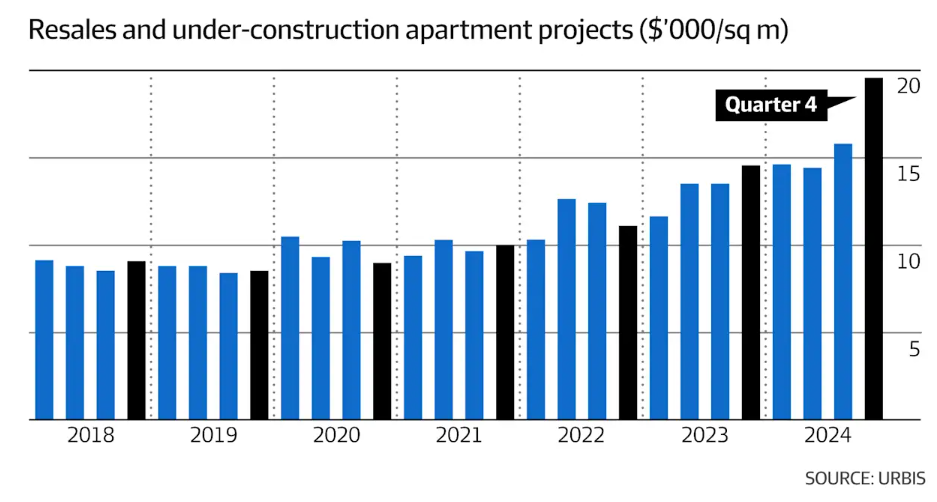
“In the last couple of years, the majority of sales across the country have been above $1 million, targeting that downsizer market”, Urbis director Mark Dawson stated.
Because of the high cost per square metre, developers have opted to build smaller shoebox apartments. As illustrated below by the ABC, three- or more-bedroom apartments make up a tiny share of the national apartment supply.
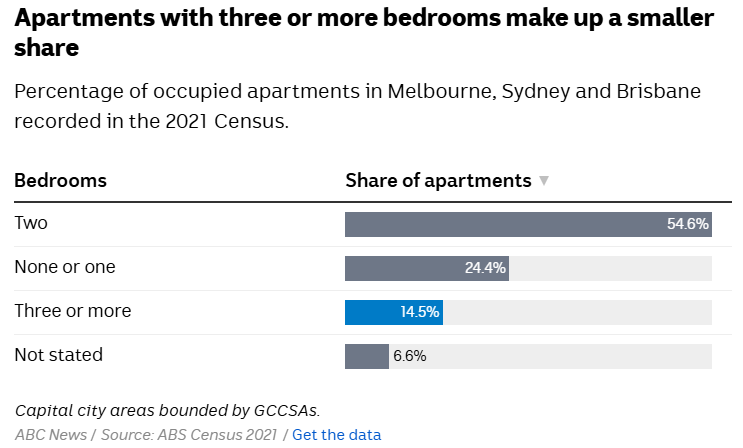
Charter Keck Cramer recently dealt another blow to the YIMBY ideal of affordable high-rise cities, revealing a six-figure difference between what homeowners will pay for apartments in numerous designated Victorian activity areas and the price required for developers to profit.
According to Charter Keck Cramer national research director Richard Temlett, there is a $100,000-$300,000 gap between buyers’ existing budgets and the cost of constructing units in the majority of Melbourne’s designated activity centres.
“Prices would have to be in the range from $875,000 to $1.05m to turn a profit at present”, Temlett said.
“These are the mid-market, entry-level homes. But our research shows that the market would be willing to pay $775,000″.
“These projects are very, very far from being financially viable”.
Temlett added that even on a square metre basis, there was a large gap between buyers and developers. Budgets are around $10,000 a square metre for buyers, but developers need at least $12,500 for the projects to be feasible.
Leonard Teplin of Marshall White Projects pointed out that some suburbs already have more than a year’s worth of units for sale.
“There are a number of areas where the current supply isn’t being absorbed by the current market”, he said.
The YIMBY movement contends that rezoning our suburbs for high-rise apartments is the most effective answer to the housing affordability crisis.
This notion is false. High-rise apartments do not boost affordability because they are so expensive to construct.
One merely needs to look at Vancouver, Canada, which is North America’s most expensive city to buy or rent.
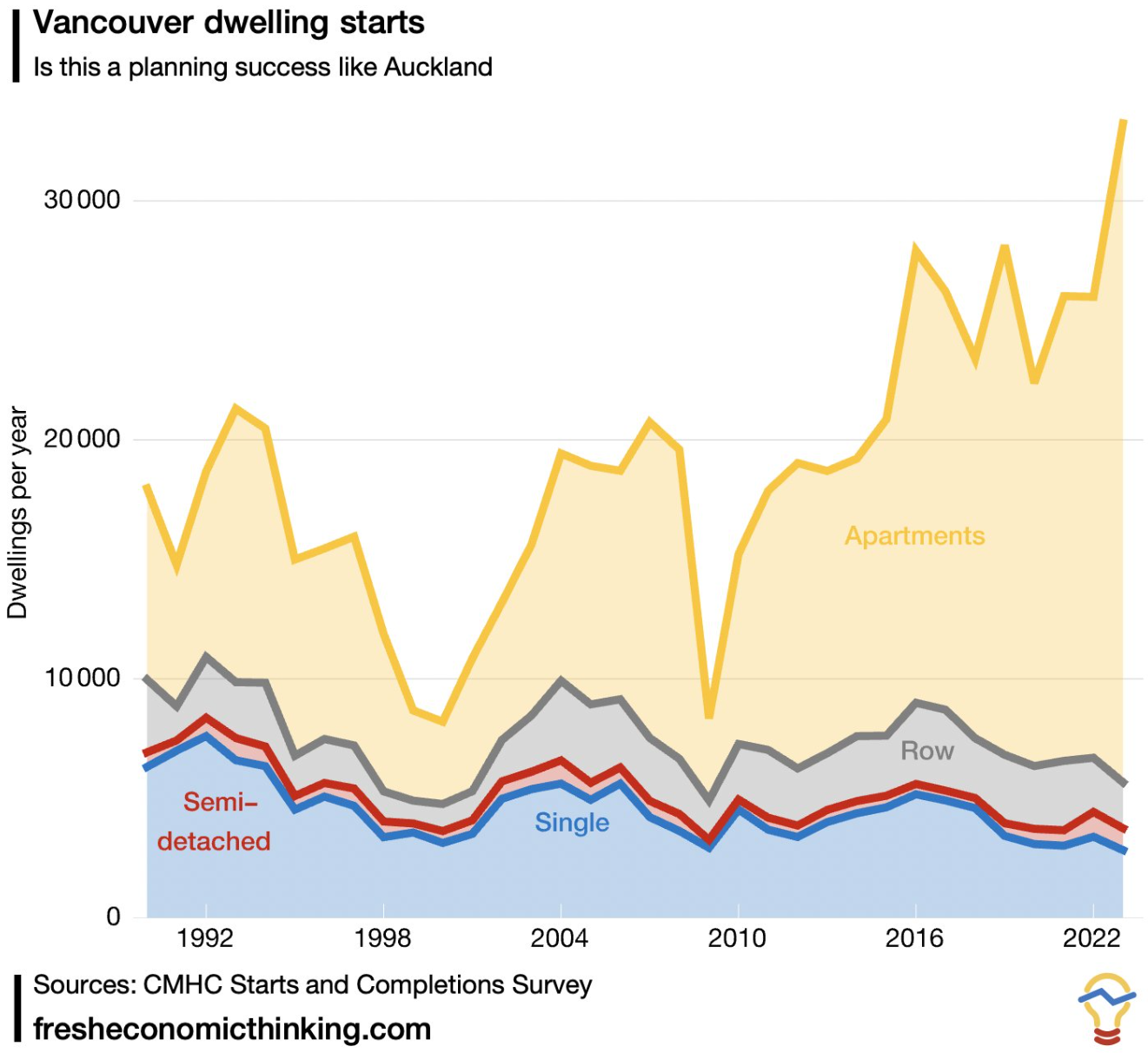
After decades of apartment construction, Vancouver has morphed into a high-density metropolis.
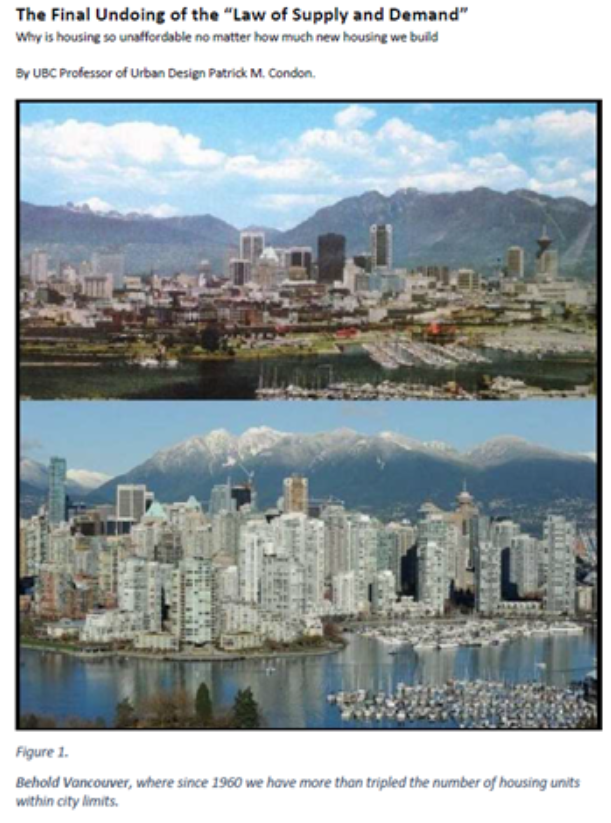
Having the most expensive property prices and rentals in North America is hardly a glowing endorsement of YIMBYism if you want to live somewhere affordable. Do not be like Vancouver.
YIMBYs also ignore severe concerns about the construction quality of new apartments and the excessive strata fees.
Australian cities would not need to transform into high-rise slums if the federal government did not pursue rapid population expansion through mass migration.
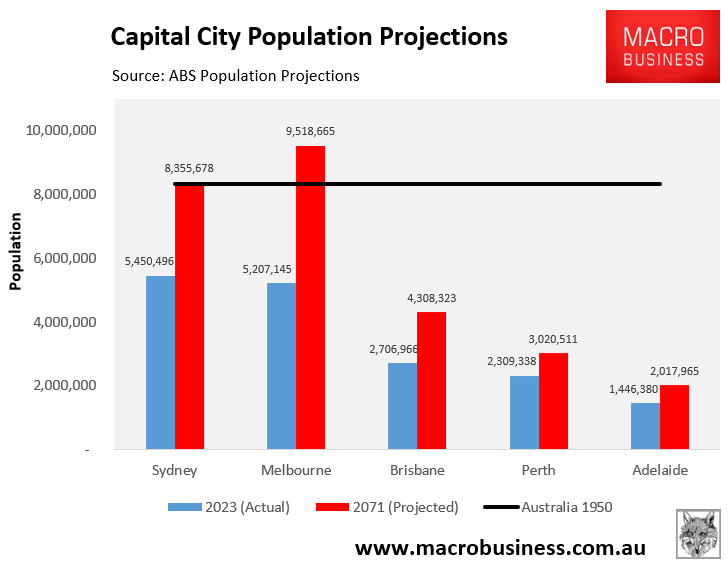
Without net overseas migration, Australia’s population would not increase, reducing the need to densify our cities and resolving the housing shortage.
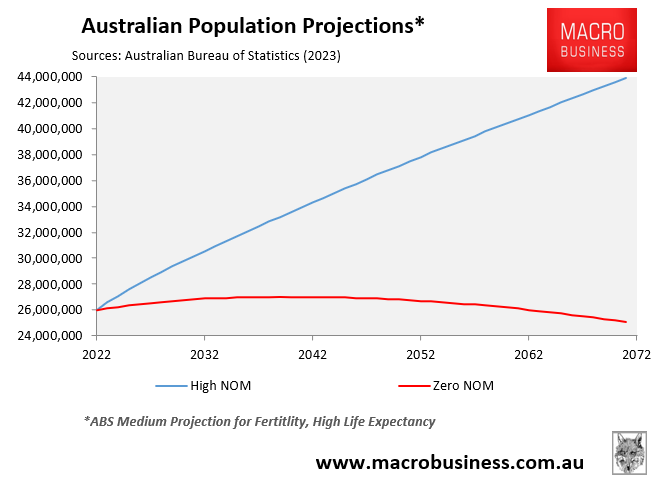
The quickest, cheapest, and most straightforward solution to Australia’s housing shortage is to limit net overseas migration to levels much lower than the country’s capacity to create housing and infrastructure.
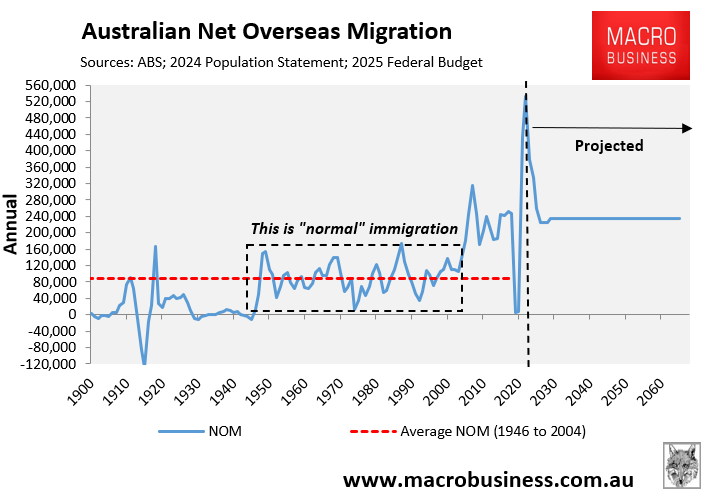
Australia’s housing shortage is a direct effect of rapid population expansion fueled by excessive immigration.
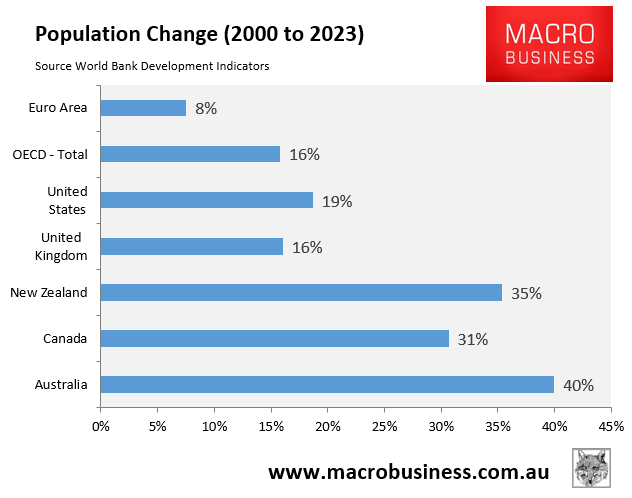
Continuing to import hundreds of thousands of migrants into Australia each year will cause permanent housing shortages and a complete transformation of the country’s urban environments and housing composition.
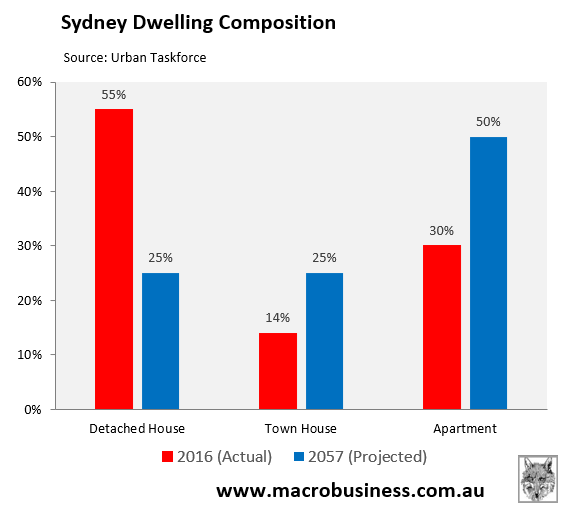
Future Australians should not be forced to live in overpriced high-rise shoeboxes to accommodate Big Australia immigration.

